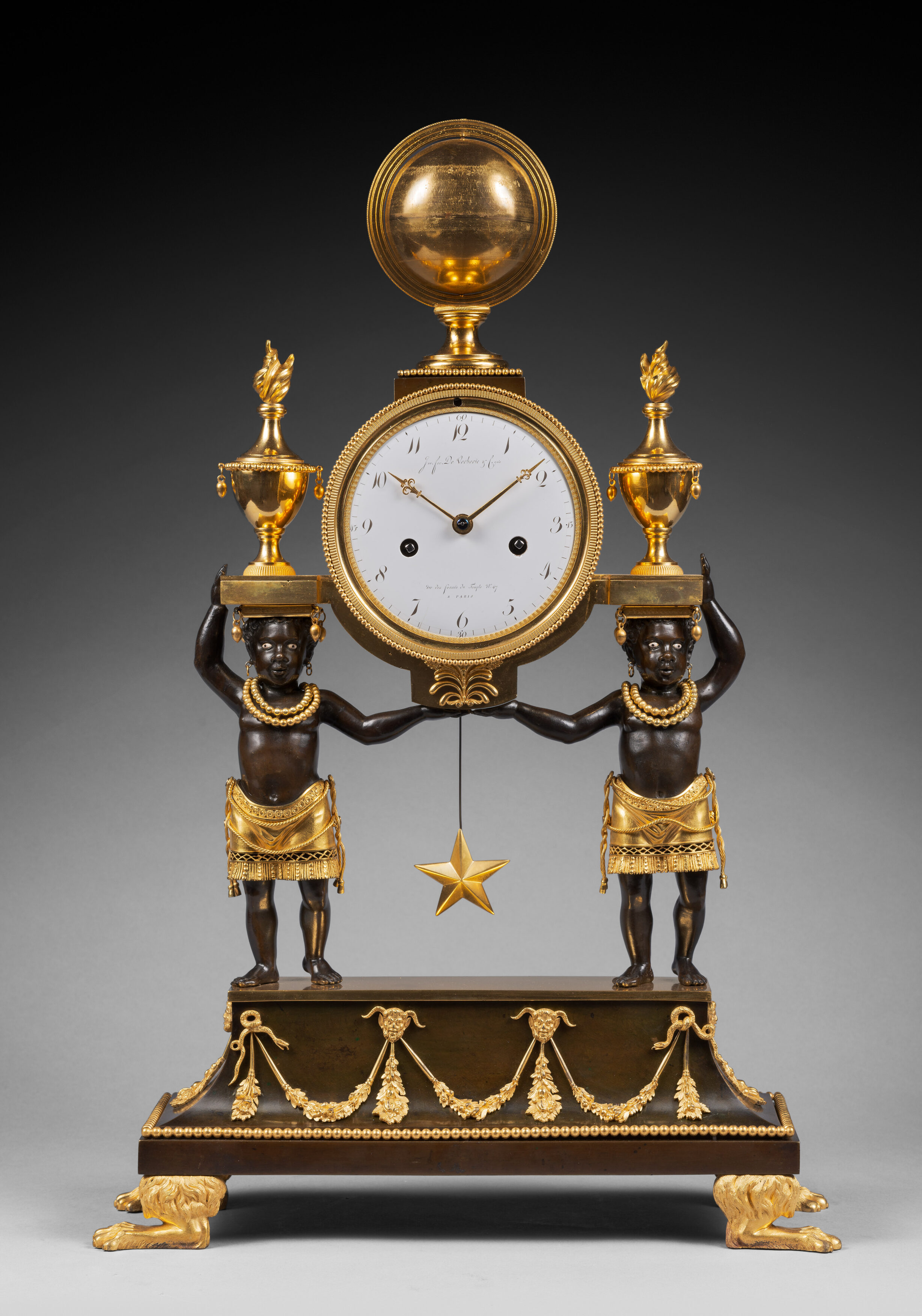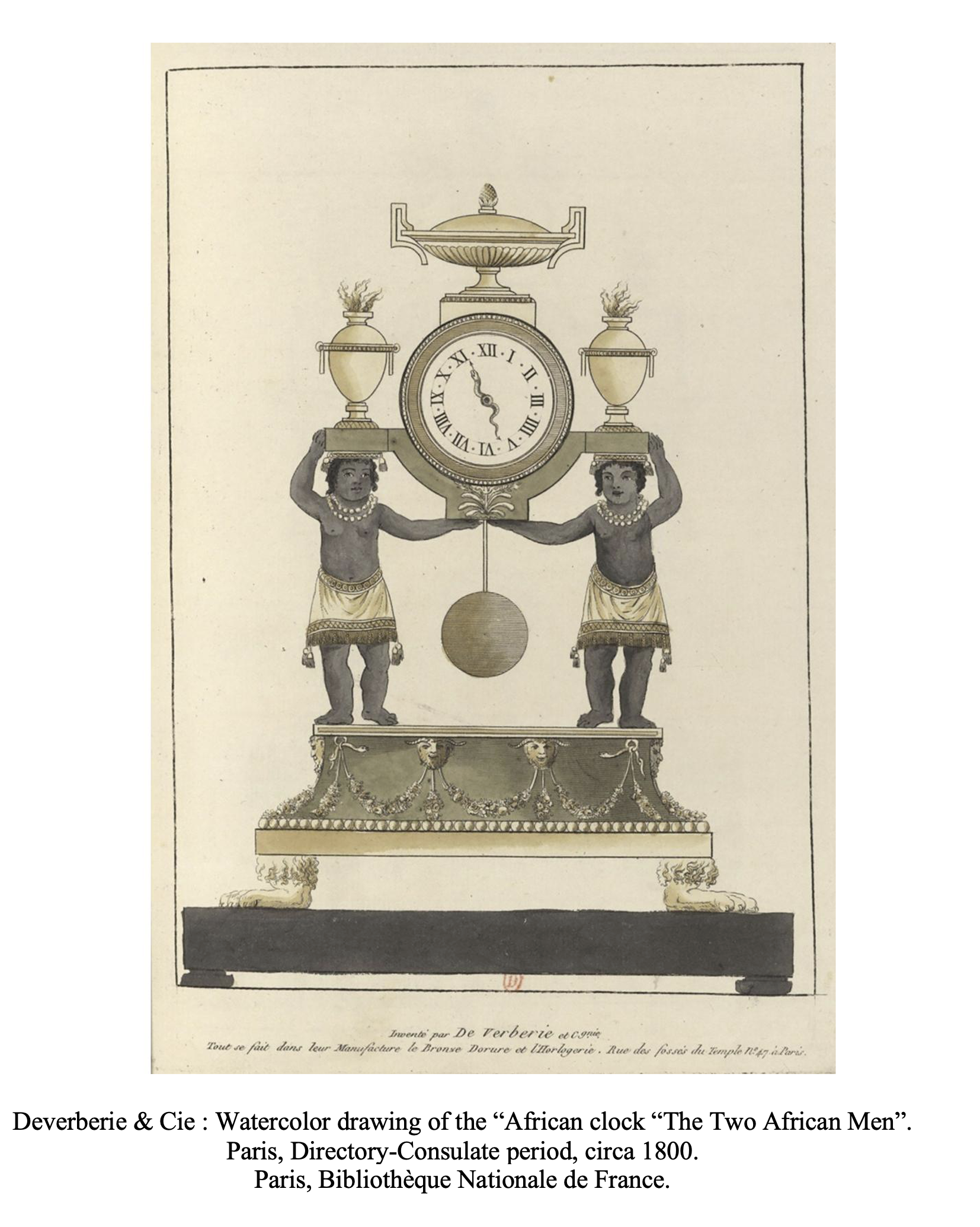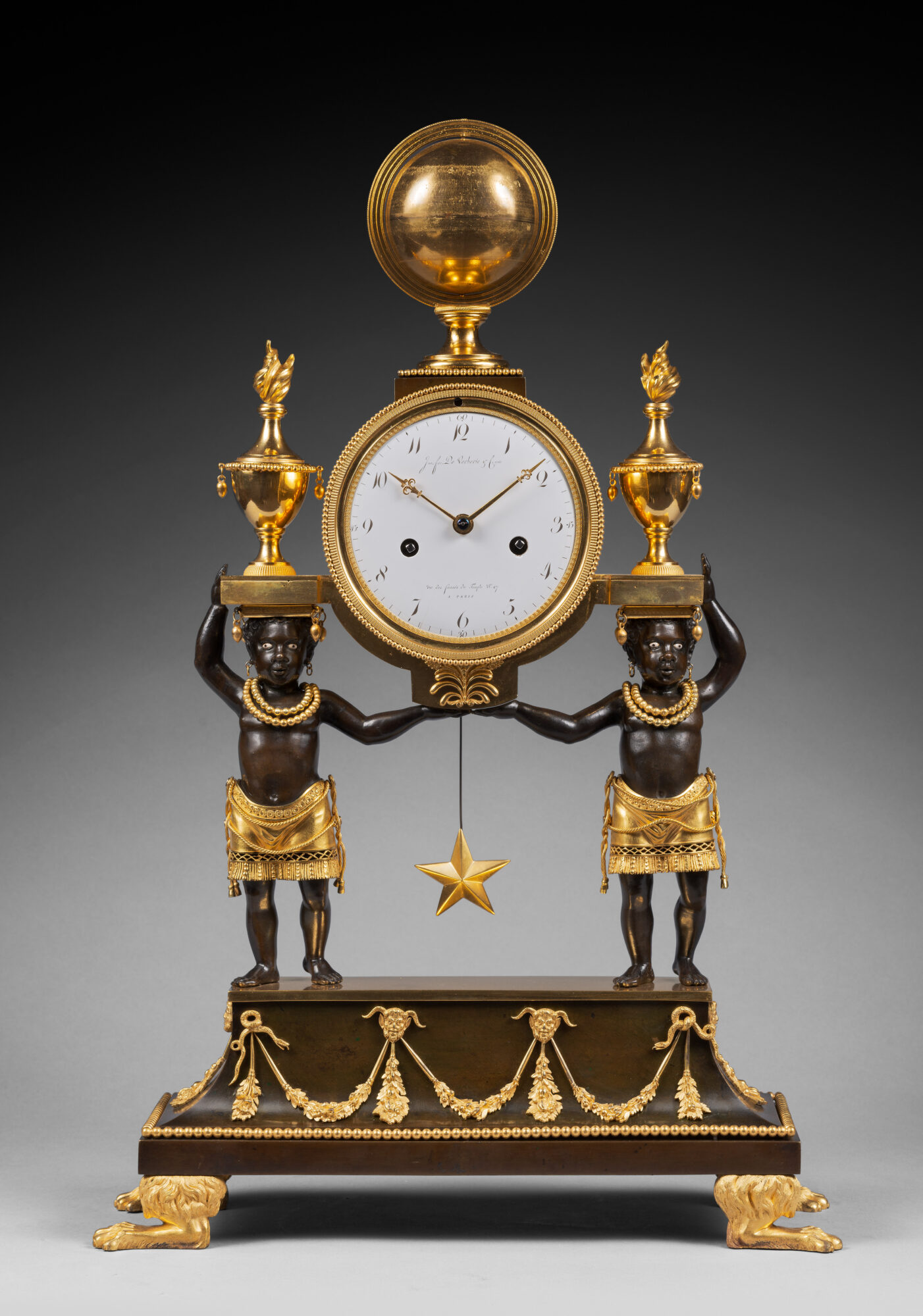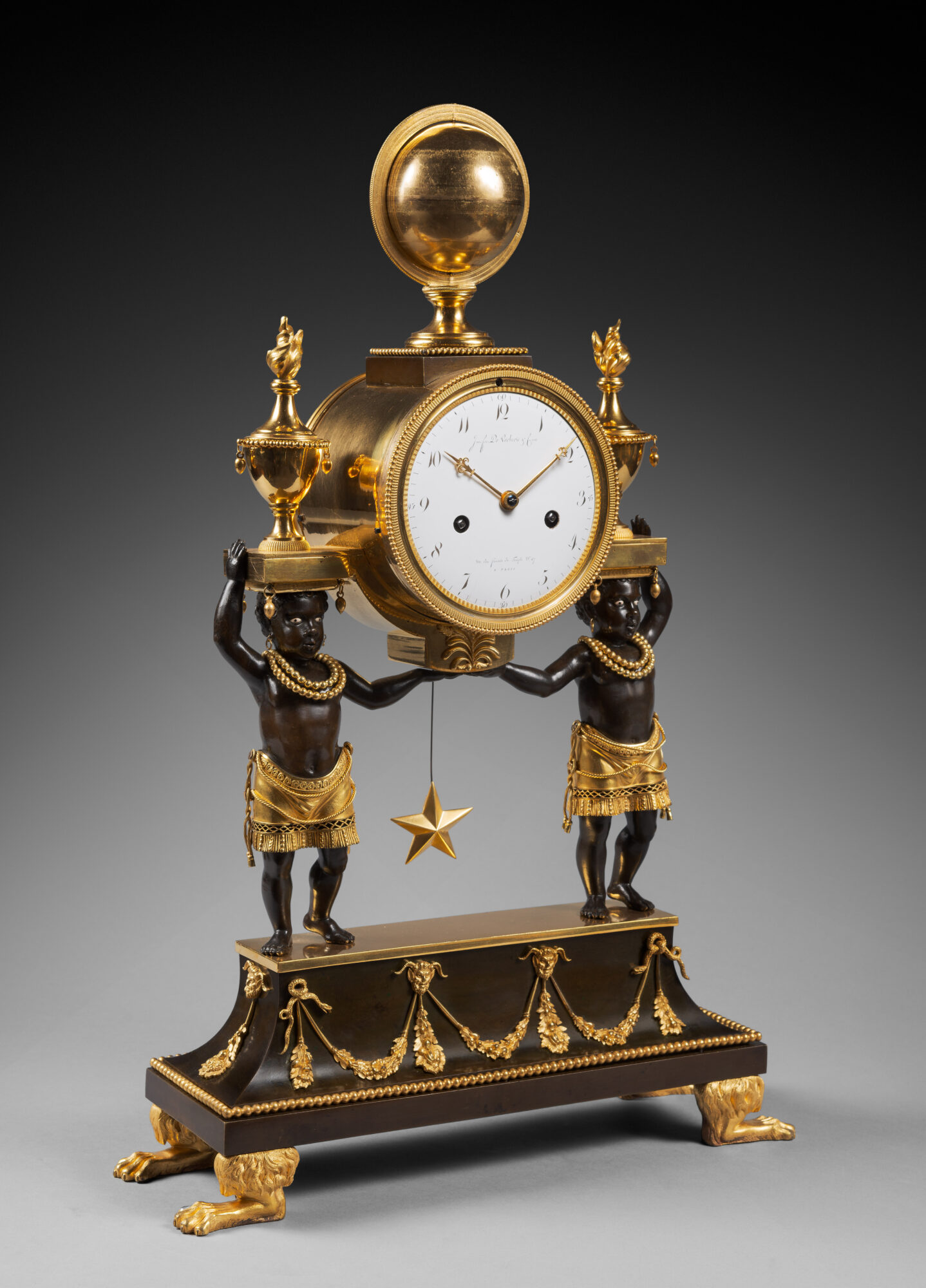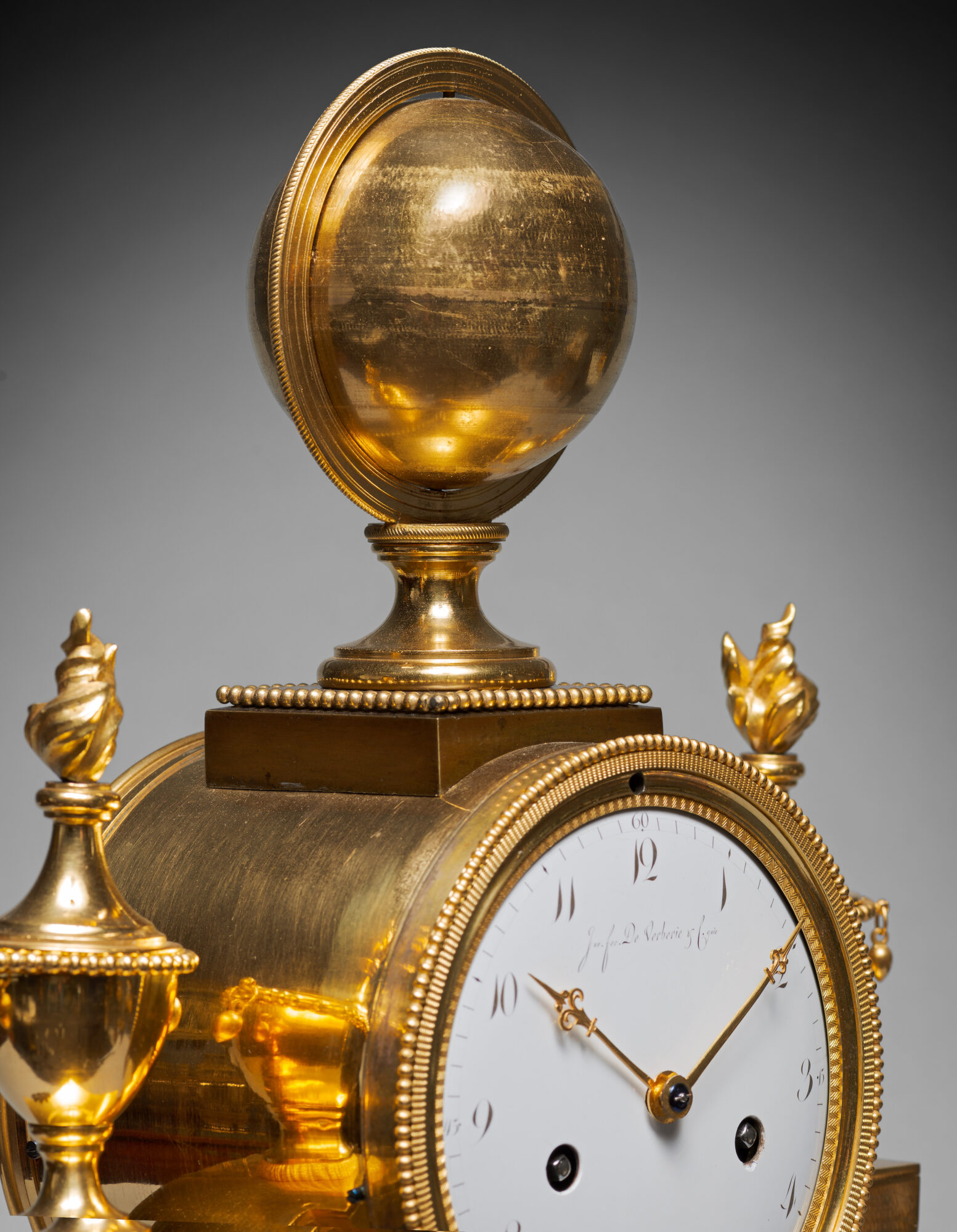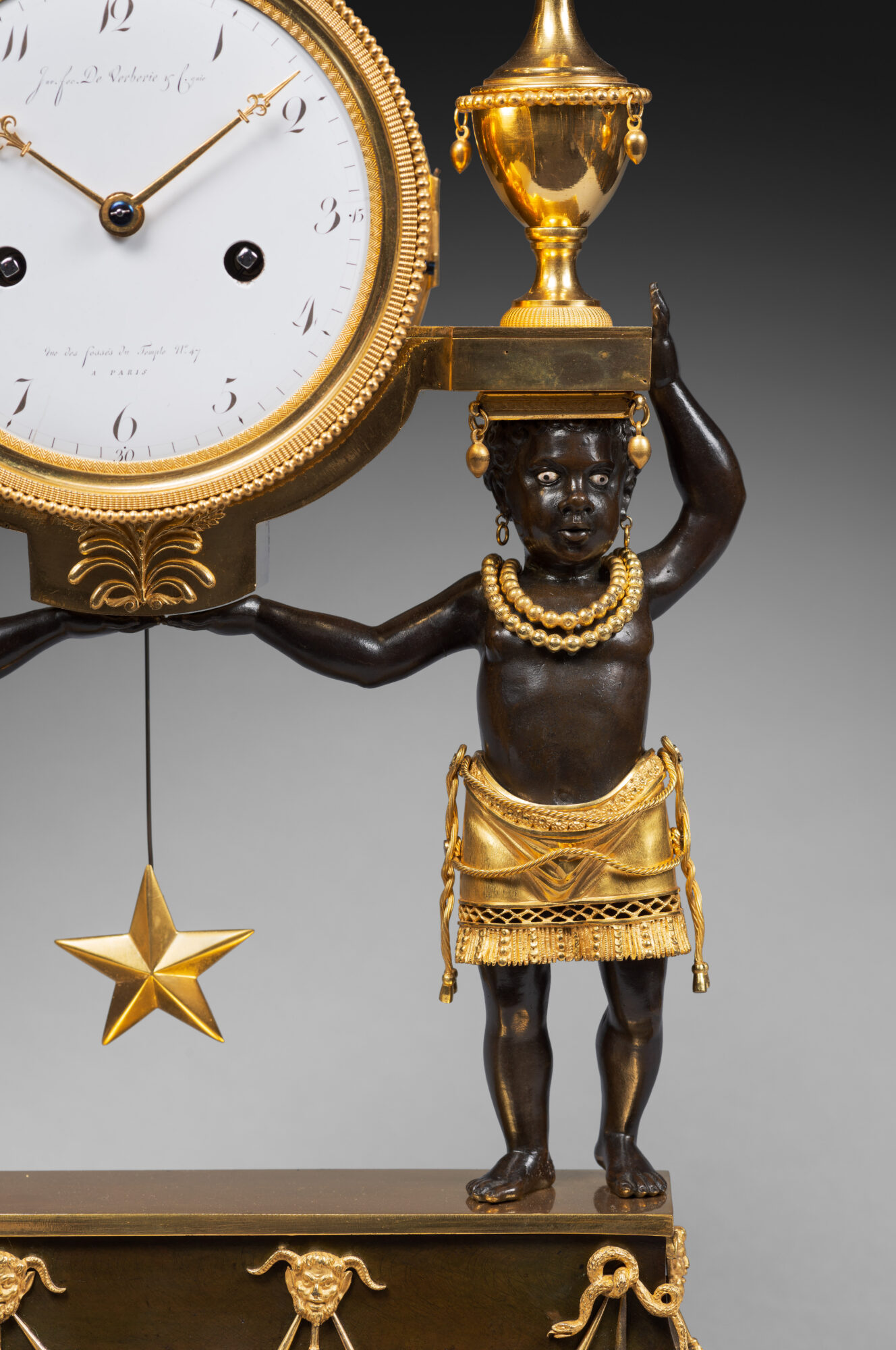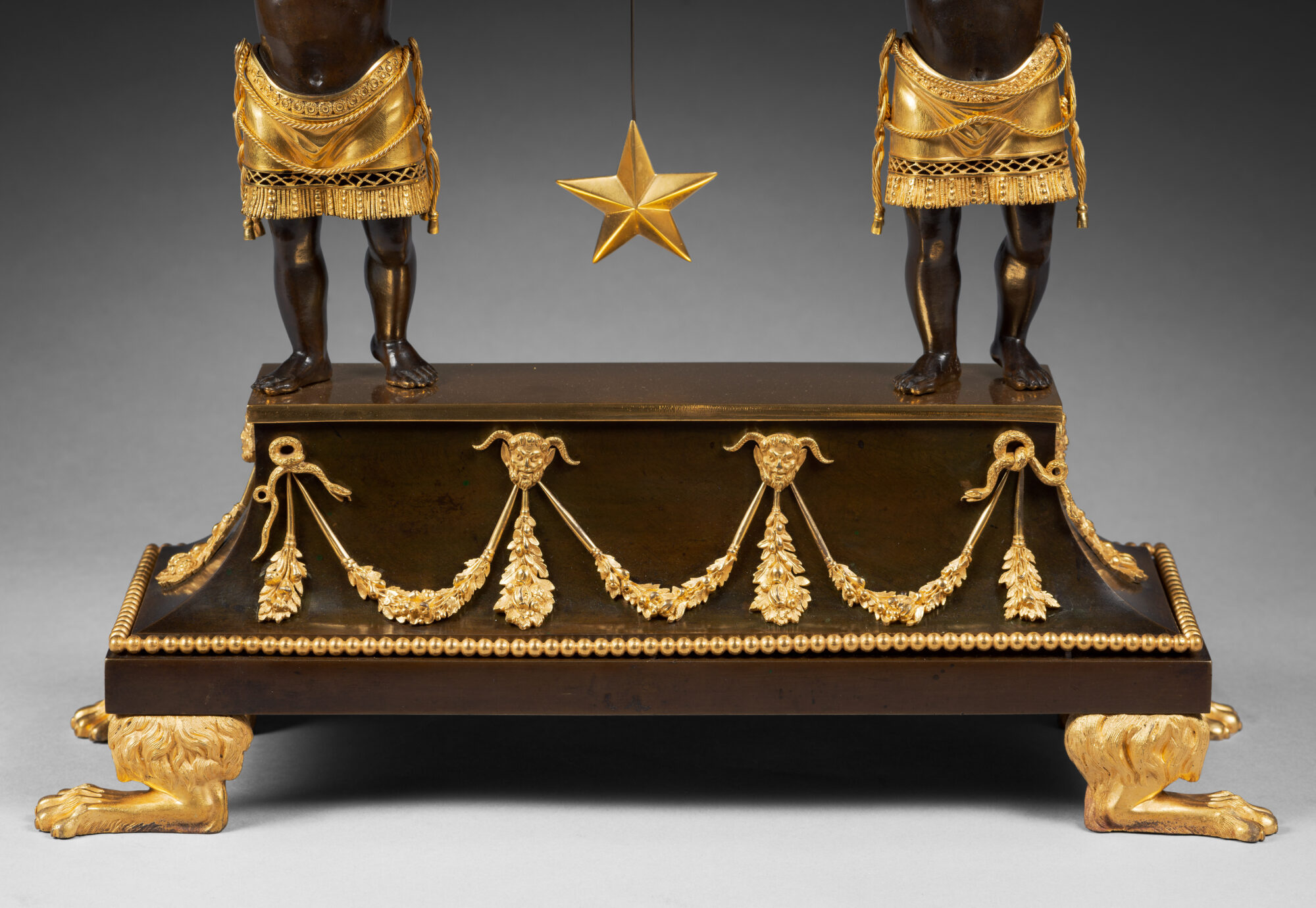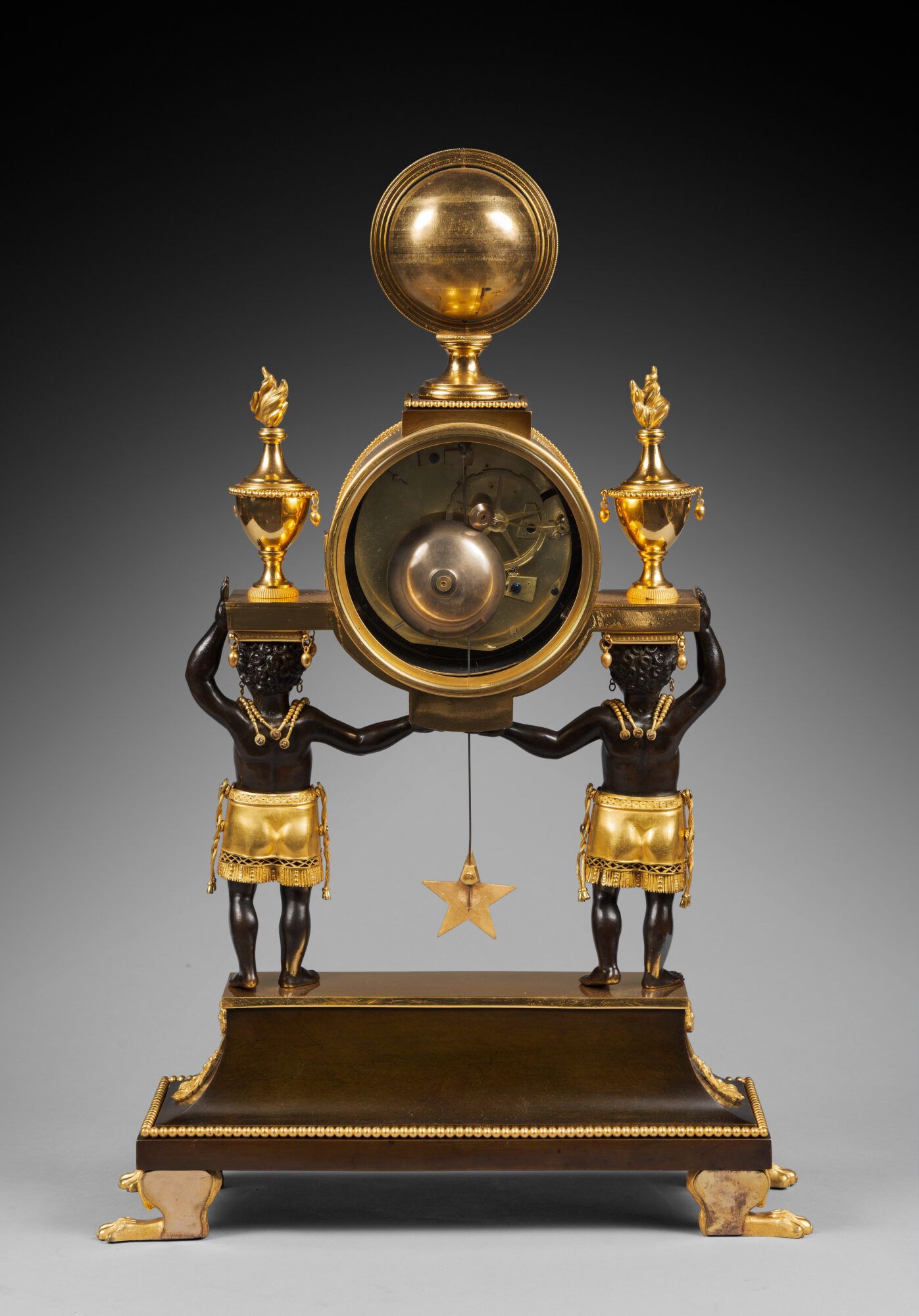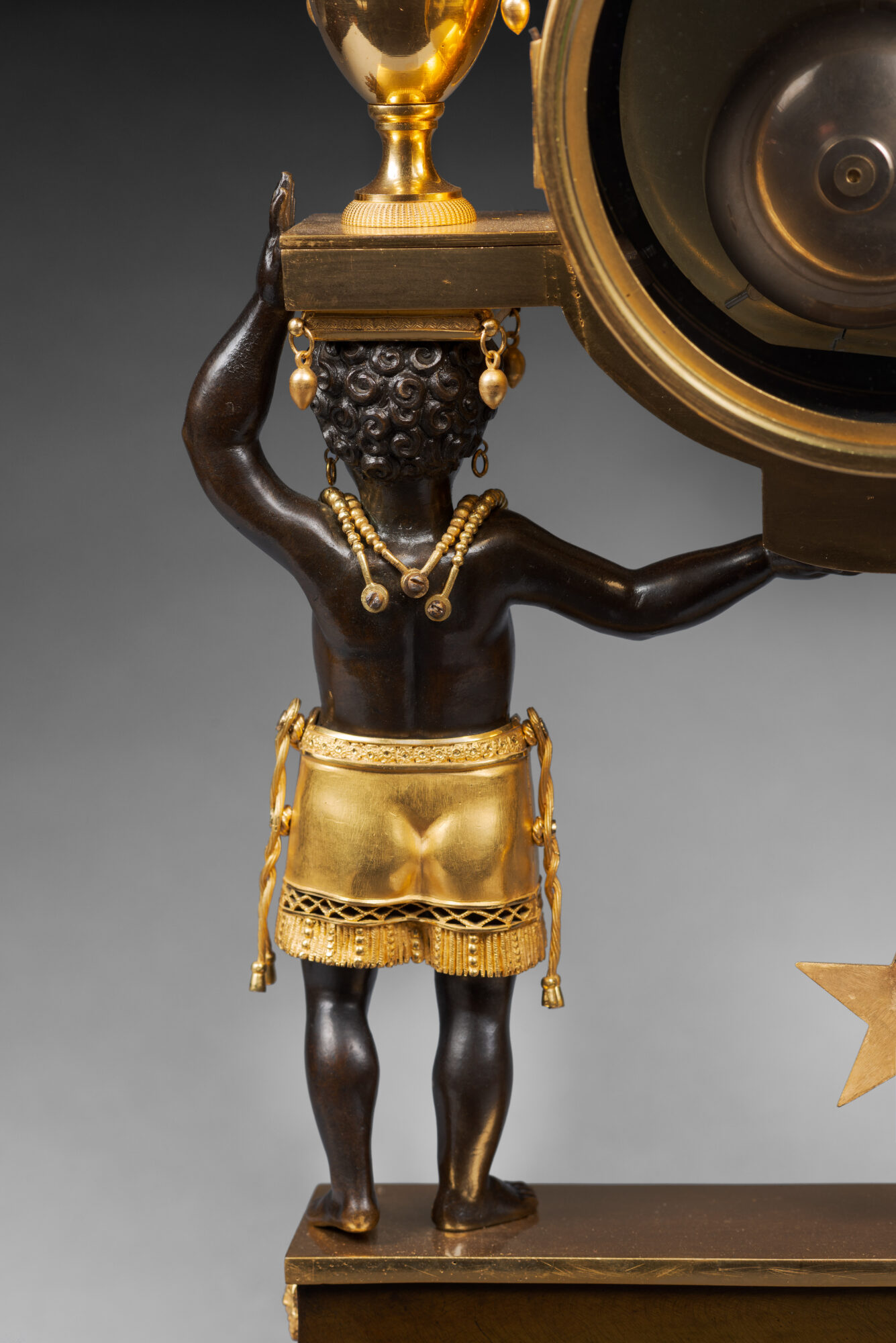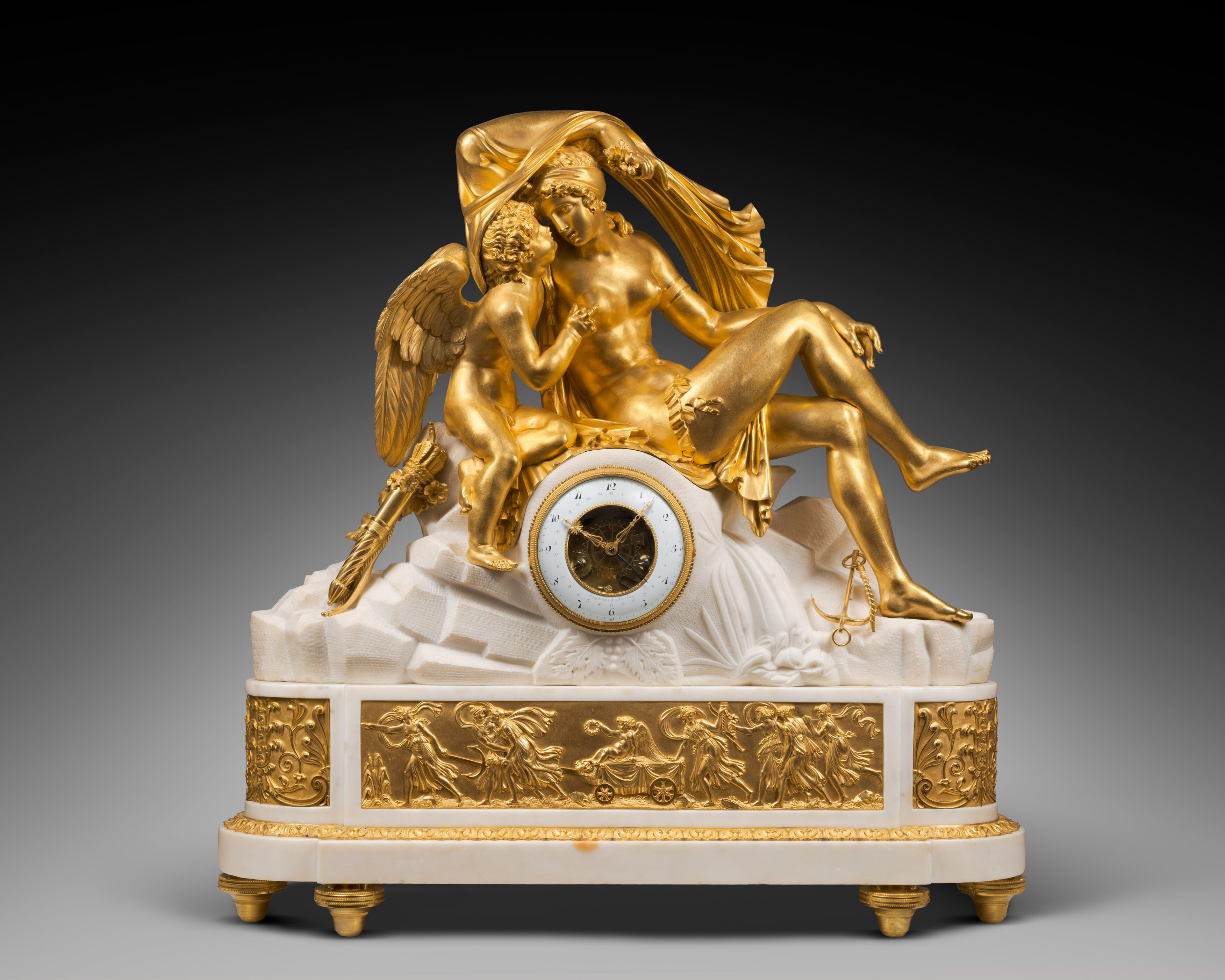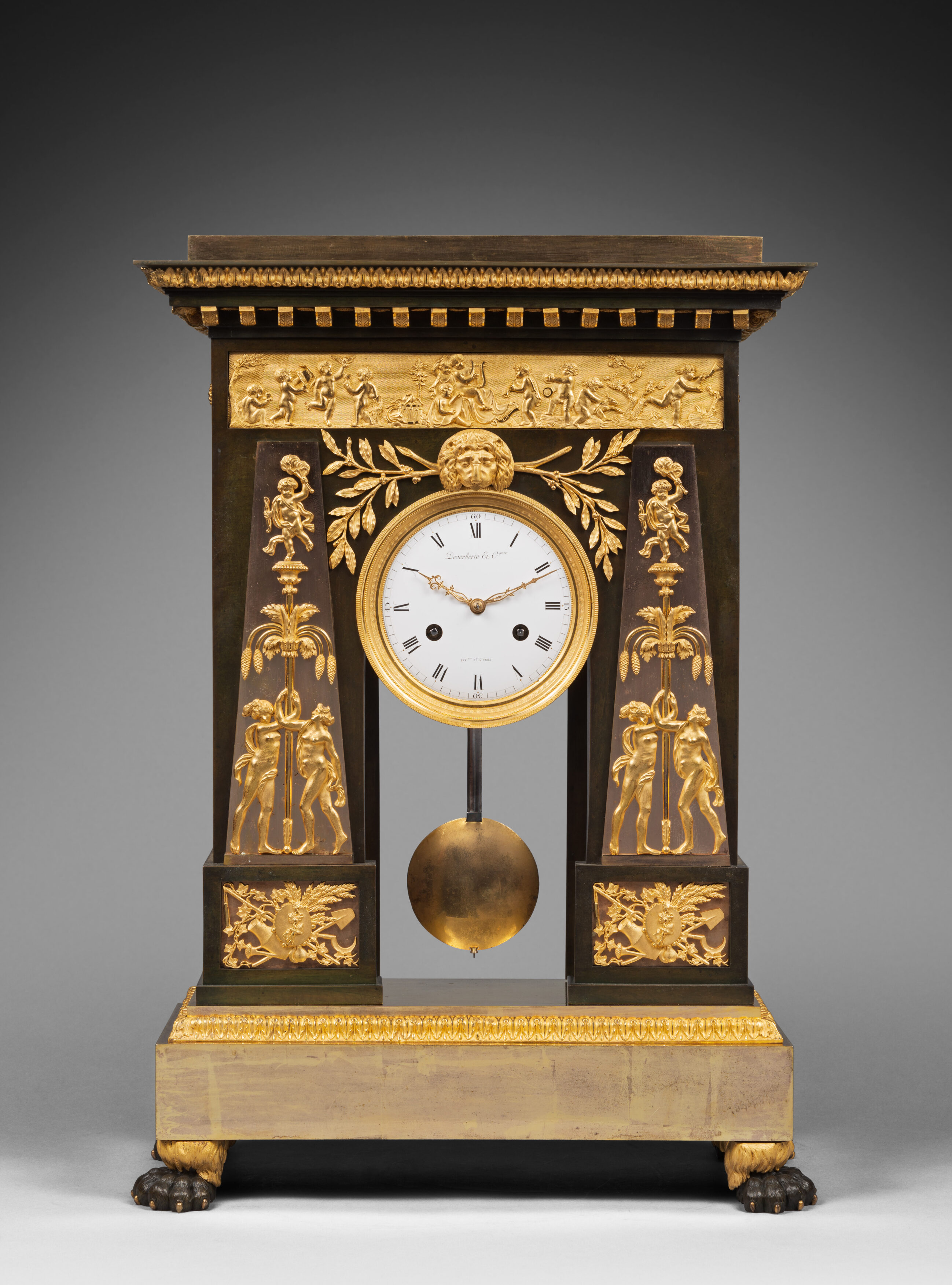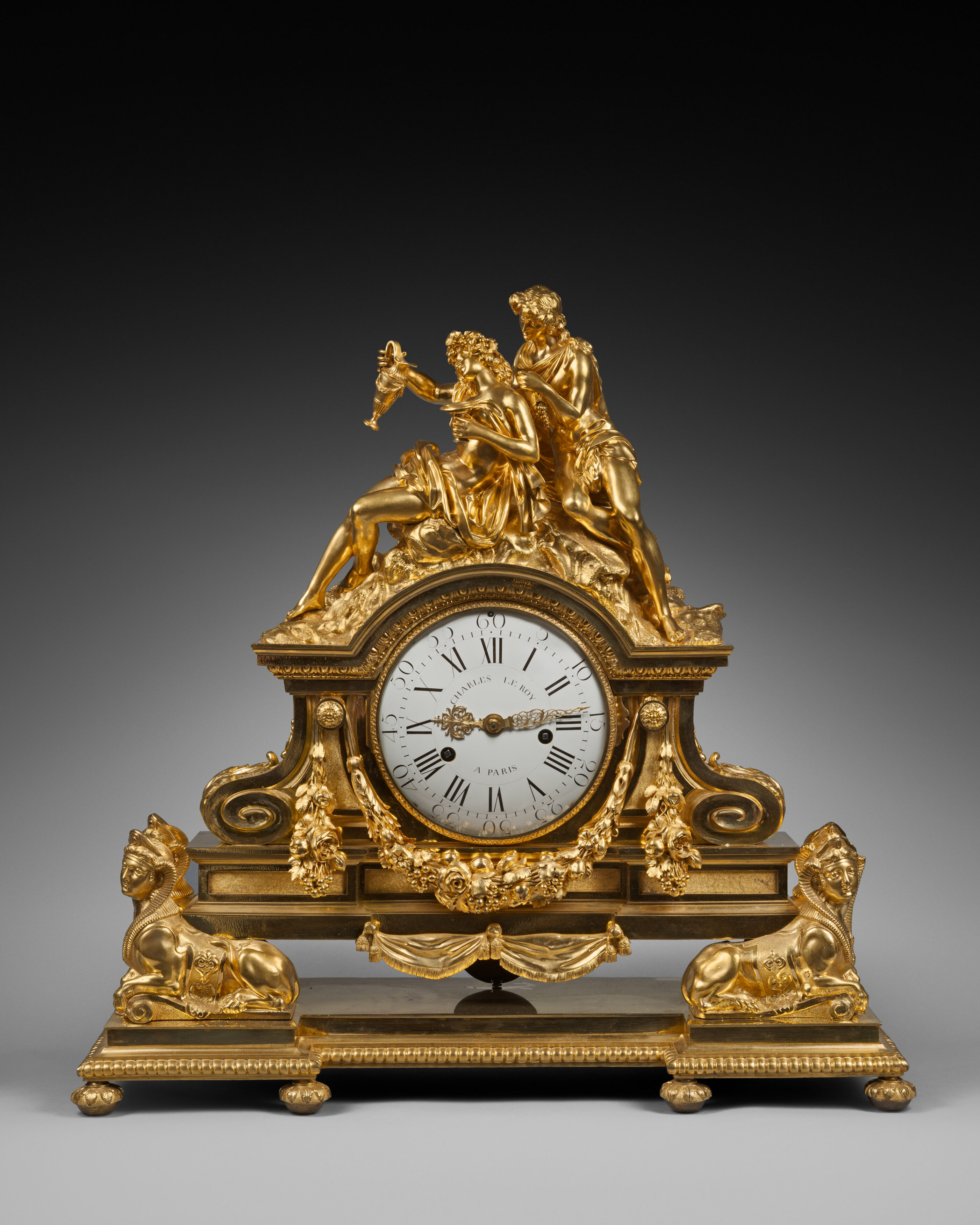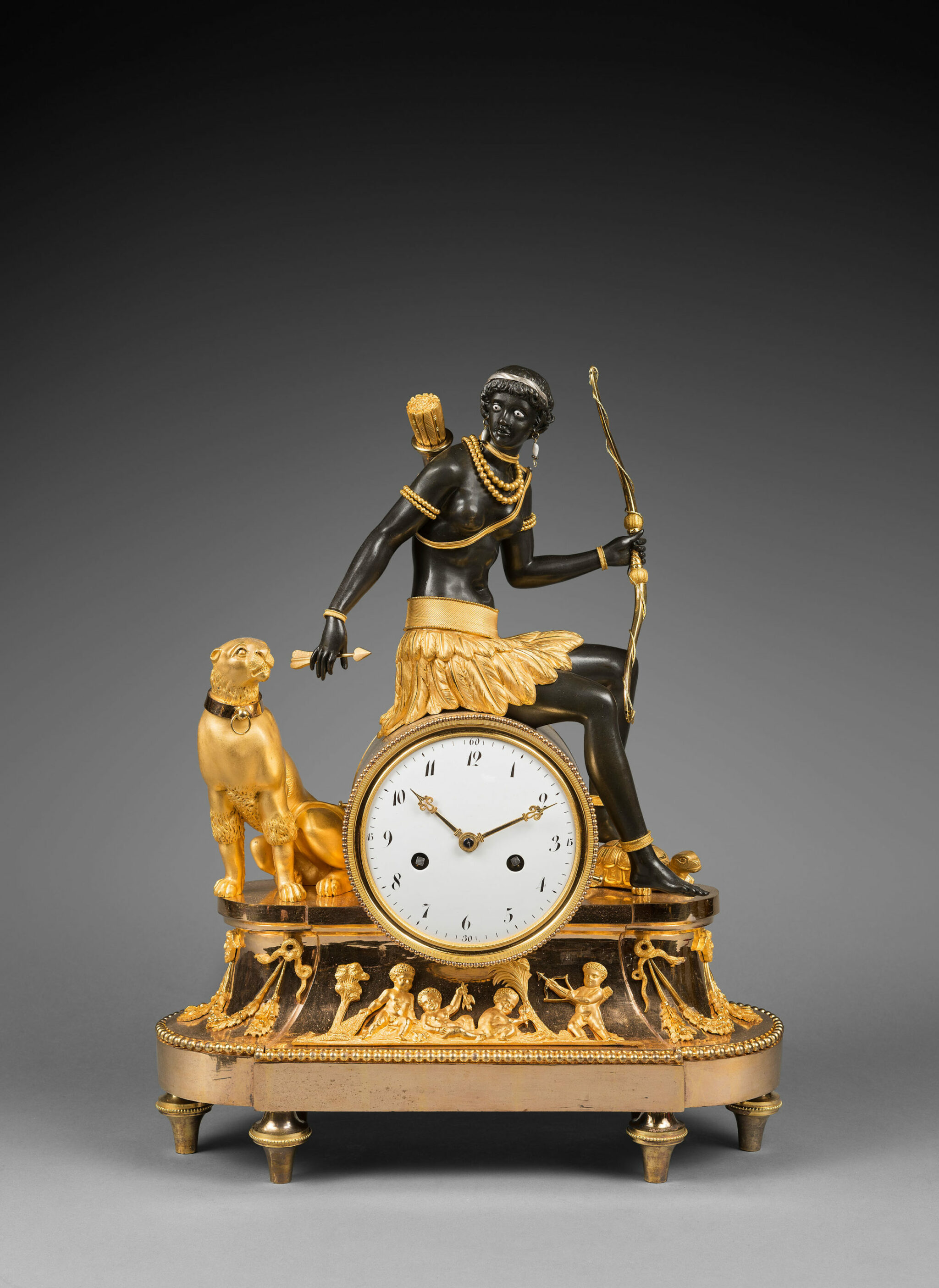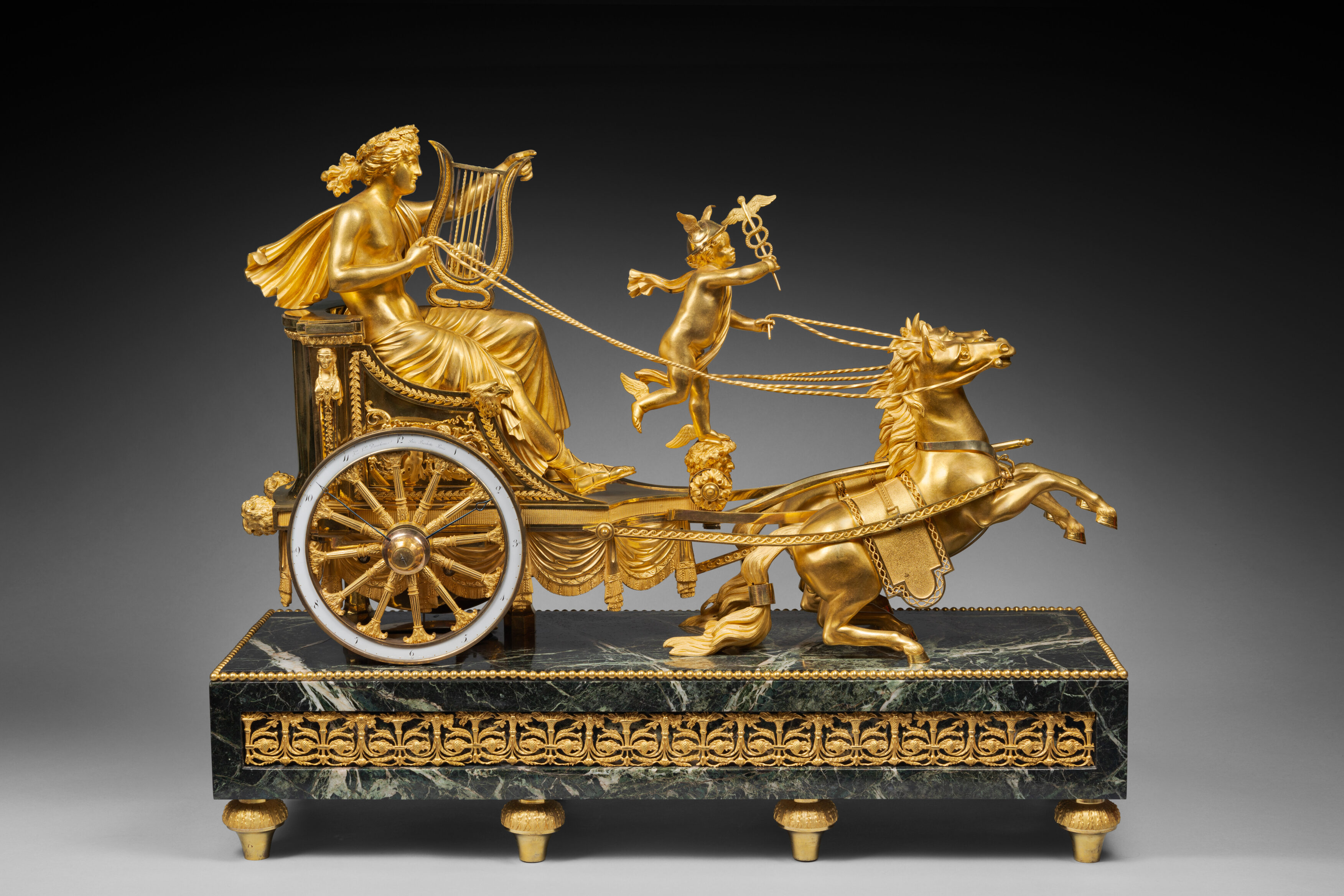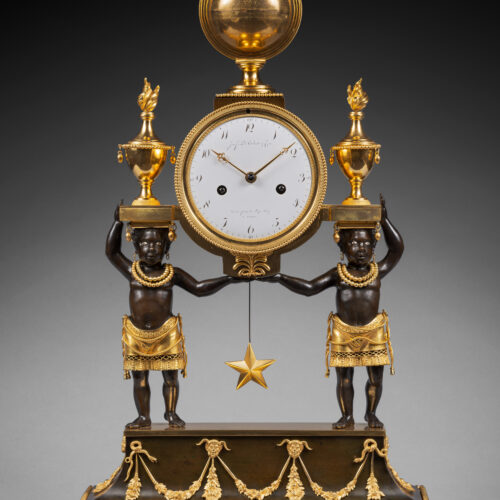Rare Gilt and Patinated Bronze Mantel Clock with Matte and Burnished Finishing
“The Two African Men”
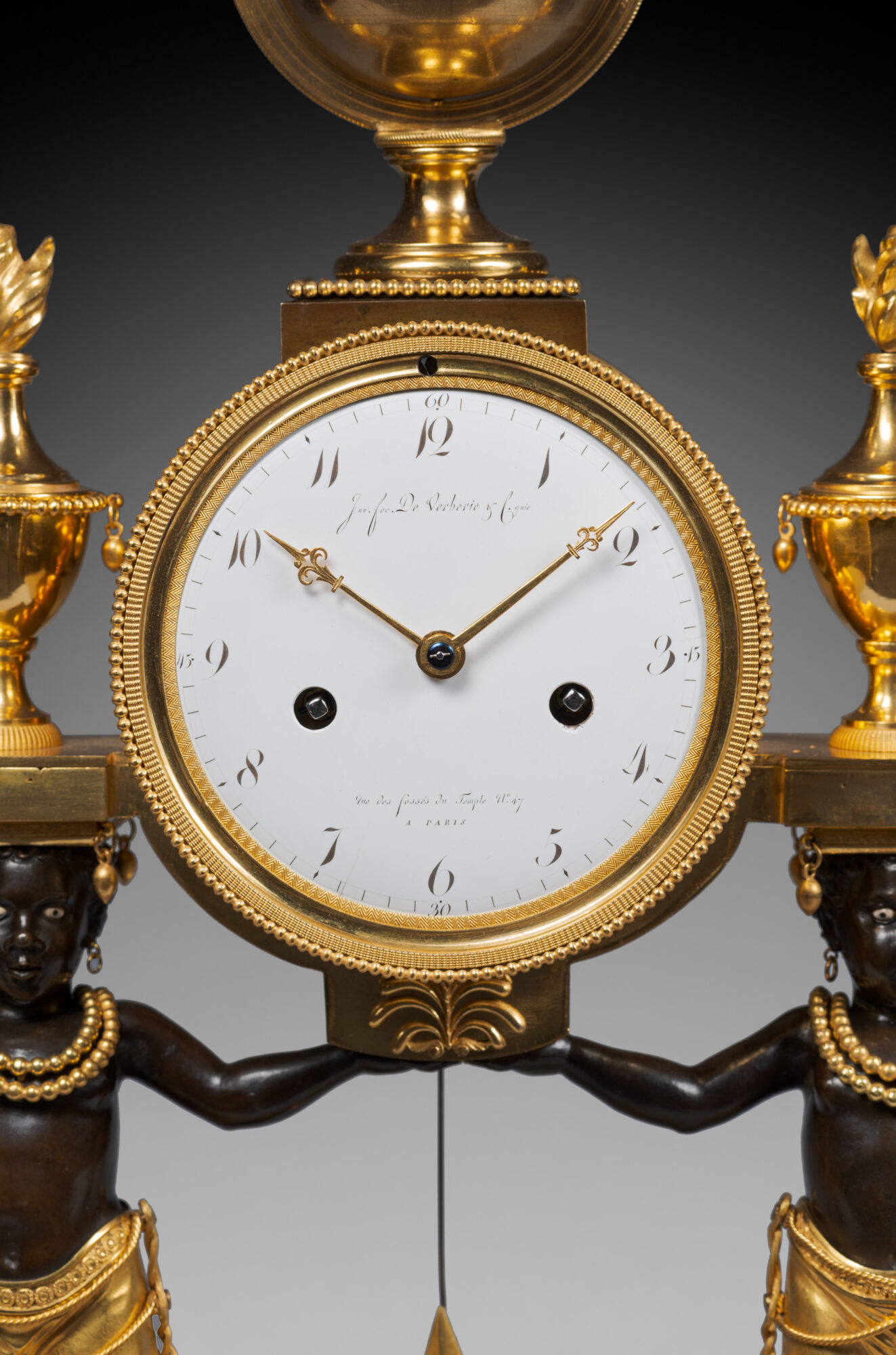
Dial signed “Deverberie & Cgnie” for Parisian Bronze Caster Jean-Simon Deverberie
The Enamel Dial Attributed to Parisian Enameller Etienne Gobin, known as Dubuisson
Paris, Directory-Consulate period, circa 1800
Bibliography:
Dominique and Chantal Fléchon, “La pendule au nègre”, in Bulletin de l’association nationale des collectionneurs et amateurs d’horlogerie ancienne, Spring 1992, n° 63, p. 27-49.
The round white enamel dial, signed “Inv. fec. Deverberie & Cgnie/rue des Fossés du Temps n°47 à Paris”, indicates the Arabic hours and fifteen minute intervals by means of two pierced gilt bronze hands. The movement, with silk thread suspension, star-shaped pendulum and hour- and half-hour striking, is housed in a gilt and patinated bronze case that is finely chased and engine-turned, and features matte and burnished finishing. The bezel is adorned with stylized friezes; the mechanism is housed in a drum case whose lower portion is adorned with a palm tree; the case is surmounted by an armillary sphere with a sloping pedestal that rests on an entablature adorned with beads. On the sides of the case there are two projecting entablatures on which stand flaming vases decorated with beads and suspended oval elements. The entablatures are supported on the heads of two fine figures representing two young standing Nubians with enamel eyes, who are wearing necklaces and earrings. They are dressed in short loincloths with cords and fringe; their clasped hands support the drum case. The two figures stand on a quadrangular terrace that is placed on a concave trapezoidal base that is adorned with beads and flower and leaf garlands that are suspended from snakes’ mouths and faun’s masks. The clock is raised on four lions’ paw legs.
Discover our entire collection of antique mantel clocks for sale online or at the gallery.
La Pendulerie is the specialist in fine and rare antique clocks, based in Paris.
It was not until the 18th century that Black figures began to be used by French and European horologists as a decorative theme. The first examples of the clocks known as “pendules au nègre” were created toward the end of the Ancien Régime, and more precisely, during the final decade of the 18th century and the early years of the 19th century. They embody a philosophical movement that was expressed in several popular literary works, including Paul et Virginie by Bernardin de Saint-Pierre (published in 1787, it depicts the innocence of mankind), Atala by Chateaubriand, (a renewal of the Christian ideal), and Daniel Defoe’s masterpiece Robinson Crusoe, published in 1719. The remarkable design of the present clock was most likely registered with the French National Library on 3 pluviose year VII (January 22, 1799) by Deverberie & Cie. A second, nearly identical, drawing called “Naigres jumeaux” is now in the Parnassia collection (illustrated in J-D. Augarde, Une odysée en pendules, Chefs-d’œuvre de la collection Parnassia, Editions Faton, Dijon, 2022, p. 430, catalogue n° 116).
Deverberie produced several versions of this type of clock, including one model featuring the figure of a young Nubian; an example is illustrated in P. Kjellberg, Encyclopédie de la pendule française du Moyen Age au XXe siècle, Les éditions de l’Amateur, Paris, 1997, p. 348, fig. A. A two-light candelabrum, several pairs of which are in the Musée François Duesberg in Mons (illustrated in Musée François Duesberg, Arts décoratifs 1775-1825, Bruxelles, 2004, p. 60-61). Very few examples of the “Two African Men” clock are known. One example is in the Parnassia collection (J-D. Augarde, op.cit., 2022, p. 430-431). A second clock was on display in 1978 in the Museum of the Hôtel Sandelin in Saint-Omer (see the exhibition catalogue “La pendule du nègre”, Musée de l’Hôtel Sandelin, Saint-Omer, 1978, fig. 35, as well as E. Niehüser, Die französische Bronzeuhr, Eine Typologie der figürlichen Darstellungen, Munich, 1997, p. 239, fig. 832).
Jean-Simon Deverberie (1764 - 1824)
Jean-Simon Deverberie was one of the most important Parisian bronziers of the late 18th century and the early decades of the following century. Deverberie, who was married to Marie-Louise Veron, appears to have specialized at first in making clocks and candelabra that were adorned with exotic figures, and particularly African figures. Around 1800 he registered several preparatory designs for “au nègre” clocks, including the “Africa”, “America”, and “Indian Man and Woman” models (the drawings for which are today preserved in the Cabinet des Estampes in the Bibliothèque nationale in Paris). He opened a workshop in the rue Barbette around 1800, in the rue du Temple around 1804, and in the rue des Fossés du Temple between 1812 and 1820.
Dubuisson (1731 - after 1820)
Etienne Gobin, known as Dubuisson, was one of the most talented Parisian enamellers of the reign of Louis XVI and the Empire period. Born in Luneville in 1731, he began his career as a painter on porcelain in Strasbourg and Chantilly. He then moved to Paris and worked at the Royal Sèvres porcelain manufactory from 1756 to 1759, specializing in the decoration of watch cases and clock dials. In the 1790s, his workshop is mentioned as being in the rue de la Huchette, then the rue de la Calandre around 1812. He appears to have retired in the early 1820s. He mostly signed his work “Dubuisson” or “Dub”, sometimes “Dubui”. Having worked with the most renowned clockmakers of his time, including Robert Robin, Kinable, and the Lepautes, Dubuisson was the main rival of Joseph Coteau. Specializing in watch cases and enamel dials, he was famous for his exceptional talent and his ability to render detail. His body of work, always of the highest quality, is considerable. To mention only a few of his pieces, some clocks bearing his signature are today in Pavlovsk Palace near Saint Petersburg, in the Louvre Museum in Paris, and in the Royal British Collection.
